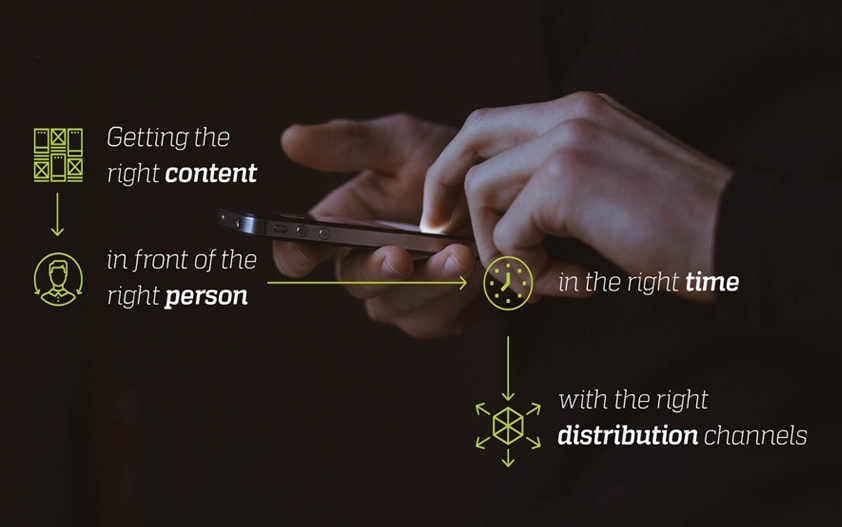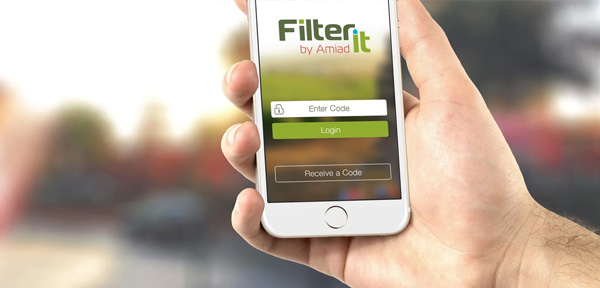The BL[OZ]
The power of content in inbound marketing
By
Orit Oz
, 16/05/2017
Content is the fuel behind inbound marketing – it carries the message your company wants to deliver to your customers at the right time and in the right place.
Content is what sets you apart
It’s the fuel behind inbound marketing – it carries the message your company wants to deliver to your customers at the right time and in the right place. It’s what powers a successful inbound strategy by pulling people from one stage of the inbound methodology to another and addressing their challenges and questions.Content in B2B
Content marketing works for every type of business. In fact, according to a report put out by the Content Marketing Institute, 85% of B2B marketers identified the creation of quality and efficient content as being a leading factor for increased marketing success in 2016. Additionally, based on company metrics, 78% of these B2B marketers report an increase in audience engagement and 57% saw an increase in sales with use of content for their B2B marketing.The content process
Now that we've established the importance of content, where do you start and what should you focus on? The best way to optimize your content for your inbound marketing strategy is to follow a content process that involves 4 main steps:- Consider the content’s purpose, format and topics.
- Create content that builds trust amongst your prospects.
- Get your content in front of the right people at the right time.
- Analyze & repeat. Determine what worked and what didn’t, and repeat your successes.
How can the digital revolution help you extend your reach?
By
Orit Oz
, 15/05/2017
As technology rocks our world, we need to get closer to our customers, understand their customer journey, and adjust our marketing and sales accordingly.
This means that before you do anything else, you need to identify, understand and talk to your customers.
This involves meeting customers at different points on their journey, mapping their journey and fully understanding their needs. Once you’ve done this, you can go on to define your potential buyer personas; identify how you meet their needs, motivations, pain points and challenges; create relevant offline and online content and tools to communicate with them; reallocate marketing and sales (and other) resources to match the real needs of your customers; and create collaboration between your marketing and sales (and other) teams. But first, get to know your customers! From there, the rest will follow.Getting creative in B2B marketing
By
Miri Peled
, 15/05/2017
Yes, branding is vital to success. But what about lead generation, which is also crucial to business and requires creative methods to bring in qualified leads?
What’s all the fuss about Inbound marketing?
By
Orit Oz
, 15/05/2017
We’ve all heard the term Inbound marketing thrown around a lot lately. It’s become the latest catchphrase in a field that’s already packed with catchphrases.
What is Inbound marketing?
Inbound marketing is the process of attracting potential customers and getting them to reach out to you. This is different to more traditional marketing (also known as push marketing or outbound marketing) where you actively reach out to potential customers through methods such as cold-calling, printed magazines, and traditional advertising. But how do you attract potential customers and get them to trust you before you’ve even pitched them your product? The answer lies in content —the foundation of the Inbound methodology. By creating carefully curated content, you’ll establish yourself as a trusted source of knowledge and attract the ideal visitors to your site, convert them into leads and then customers, and keep them engaged so they go on to promote your brand. “By publishing the right content in the right place at the right time, your marketing becomes relevant and helpful to your customers, not interruptive.” - Hubspot
Inbound marketing in a nutshell
Inbound marketing is filled with complexities, but the following four steps (based on the Hubspot Inbound methodology) summarize the main Inbound stages:- Attract. Before you do anything, you need to fully research and understand who your ideal customers or buyer personas are. Once you have identified them, you can get them to come to you.
- Find creative ways to “convert” these potential customers into leads by offering them something valuable in return.
- Turn your leads into customers.
- Continue to engage with your customers so they become promoters of your brand.
Inbound marketing in B2B
At this stage, you may be wondering whether Inbound marketing works in the world of B2B. The answer is a big loud “Yes!” In fact, Inbound marketing creates a win-win situation for you where you can get closer to your direct customers and distributors, and also increase brand awareness amongst end users to enhance end-user demand for your brand (even if you they are not buying directly from you). Read how Elcam used digital marketing to increase brand awareness>>Combining Inbound and offline marketing
We’d like to emphasize that Inbound marketing does not replace the need for interpersonal interaction with your customers – especially in B2B industries where the customer model tends to be more complex and is often based on long-term relationships. The goal is to find the right communication mix for your specific B2B business needs, market and customers. By promoting your brand through a digital dialog and an inter-personal dialog, you can achieve a more effective and efficient sales and marketing process for better business results. For example, you can combine a compelling digital campaign to encourage potential customers to visit you at a trade show, and then meet them at the event to continue a direct dialogue with them. Look out for our next blog post on the need for face-to-face communication with your customers and creative ways to combine digital and interpersonal communication (coming soon).Inbound marketing – here to stay?
Another big loud “Yes!” It’s quite simple - as more and more potential buyers turn to the Internet for answers to their challenges, they look to buy from suppliers who instill trust by answering their questions and offering solutions to their problems. This means that in order to stay relevant in the marketplace, you have to be present where your potential buyers are looking for answers - online. And that’s why everyone is fussing over Inbound marketing.The importance of branding in launching new products
By
Orit Oz
, 15/05/2017
Prior to the recent release of Mazor X, Oz Branding worked with Mazor Robotics to create a compelling brand promise for the new product — Align with Experience.
Using online marketing to generate a buzz (or a moo)
By
Miri Peled
, 15/05/2017
When Afimilk was preparing to launch its new AfiLab, the company turned to Oz Branding for assistance in creating a combined online and offline campaign.
Afimilk case study: all you need is lab
When Afimilk — a pioneer and global leader of management technology for dairy farming — was preparing to launch its In-line Milk Lab internationally, the company turned to Oz for assistance in creating a combined online and offline campaign for the launch.- Online – including digital ads in a variety of professional magazines, a social network campaign that was launched 6 weeks before the expo, the creation of a specific AfiLab mini-site, blog posts on the subject, a newsletter, a PR, and more.
- Offline – including brochures, a booth at the trade show, giveaways, printed ads, and more.
Should I Still Speak to My Customers Face-to-Face?
By
Miri Peled
, 14/05/2017
Are you struggling to find the right marketing mix? Get some tips on creating an offline marketing strategy that is complemented by your online strategy
Integrating online and offline marketing
With all of this focus on online marketing, we tend to think that we should invest all of our energy in our online presence. But it’s not that simple as customers don’t only spend their time online. While online marketing is crucial to growth and success, you need to also engage your customers using offline methods – especially in B2B industries where long-term relationships with customers are crucial to success. A good way to understand this is to compare it to the use of social media in our personal lives. Most of us frequently share personal information about ourselves, our families, our hobbies, and more, on social media platforms. Despite the fact that these platforms seem to “replace” direct relationships, that’s not usually the case, and most of us still make a lot of effort to meet with our families and friends on a regular basis to nurture our inter-personal relationships. If we apply this example to business, we can build well-balanced marketing strategies by combining the use of social platforms to share knowledge with potential customers and build their trust, with inter-personal, offline interactions.
Not mutually exclusive
Using both online and offline marketing doesn’t mean that you need to create separate strategies for each. Instead, you need to create the right marketing mix for your company and field where your offline marketing strategy is actually complemented by your online strategy, and vice versa. Here are some examples:1. Trade shows
Trade shows may be traditionally associated with “offline” marketing, but you can leverage your investment in them by using a digital strategy to promote your company’s presence at the event. This can be done through digital ads, social media campaigns, landing pages, calls-to-action, and even webinars or videos talking about the upcoming event and where to find you. These promotions can be used to both promote your business in general, and to set up meetings or collect quality leads.At the event, you’ll be able to meet these potential customers (and other) face-to-face and most importantly, to follow up after the event based on what they told you about their specific needs. Again, the follow-up communication can be done through both direct communication and digital communication such as newsletters.
Read here about the online approach to event marketing>>
2. Samples to customer
Offer potential buyers and distributors that leave their contact details via digital platforms free samples of your products (where relevant) or promotions. In this manner, you can collect quality leads from customers, communicate with them directly to get them to try your products, and continue to engage with them through online campaigns. You can also use geo-driven campaigns to attract potential buyers and then refer them to local points-of-sale.
3. Digital campaigns and demos
Use digital campaigns and landing pages to encourage potential buyers to leave their information and then call them to set up a live demo of your product. You can continue to nurture the relationship with these potential buyers after the demo through a combination of offline and online marketing techniques.
4. Join social media groups
Join and contribute to social media groups in your field, use them to increase your brand awareness, and look out for offline networking initiated by these groups, including impromptu meet-ups and offline conversations. You can also initiate such offline events in order to meet potential leads face-to-face.

















